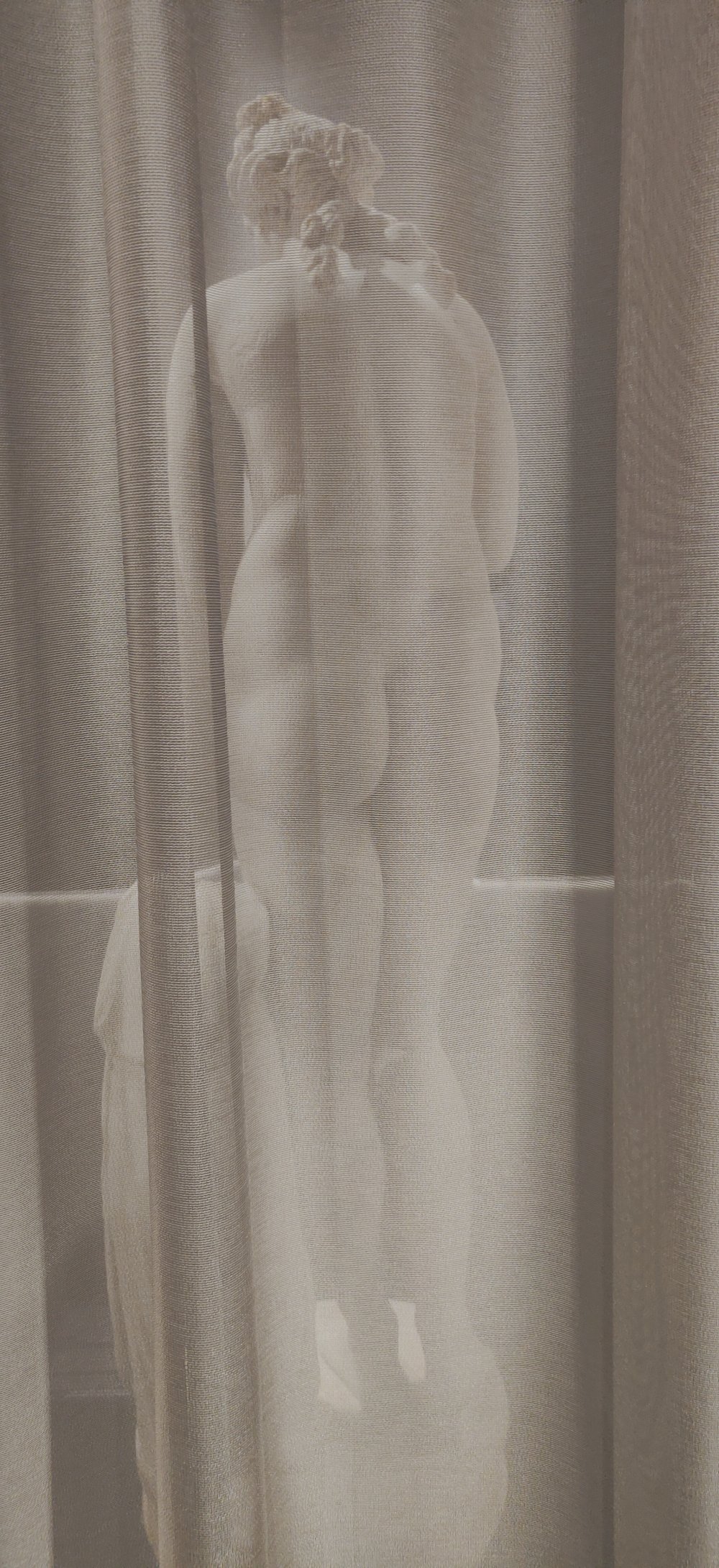Une mélodie n’est pas lue, elle est chantée
The birth of Aphrodite
Marble statue of Aphrodite of the Syracuse type
From Baiae in South Italy. 2nd century AD (the original of the type dates back to the 4th century BC)
The goddess is represented half-naked, as a nymph, with her himation wrapped around the hips and the right hand in front of the chest. The neck, head and right hand have been restored by the famous neoclassical sculptor Antonio Canova.
Born from the foam of the sea, according to the Hesiod, was Aphrodite, daughter of Uranus (the Sky). Her companions were Eros and Himerus (desire). Having travelled as far as the shores of Cyprus, the goddess emerged from the sea waves. There, as mythological tradition has it, the Horai (seasons of the year) and the Graces, anointed her, dressed her in divine robes, adorned her with bright ornaments and led her to Olympus. Since then her allotted task was to offer erotic desire to gods and mortals. According to Homer, the bewitching goddess was the daughter of Zeus and Dione.
The unsurpassed beauty of Aphrodite transcends the ancient art that records in a vivid and glorious manner her sensual figure. Associated sometimes with legends narrating her adventures and at other times with her cult, the image of the goddess embodies the essence of female beauty and symbolises the generative power of sexual union. Monumental representations of Aphrodite are encountered in the works of famous artists from antiquity, such as the supreme sculptor Praxiteles, who was the first to depict the goddess naked.
by Why Athens
Publié le 29 septembre 2019

